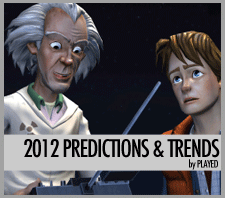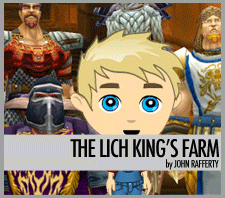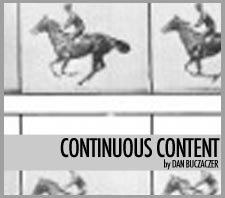WHAT WE LEARNED FROM TWEET RACING
Posted by Eric Bee | February 11, 2011
Last week, we had the pleasure of helping run the world’s first Tweet Race for Mercedes-Benz. Along with our colleagues at Razorfish, we took four teams across the country in Mercedes-Benz vehicles that were “fueled by Twitter,” meaning the teams had to generate social media activity to keep their engines running. We designed a game around this that involved the teams competing in challenges, stoking their supporters for extra Tweet Fuel, and various tasks to accomplish both online and offline, all building up to a winner based on the strength of their social network and their skill behind the wheel.
Over a frenzied three days of racing, we learned a lot about games, digital marketing, competitive spirit, blizzards, Dallas ice treatment controversies, live event management, and when to let go and enjoy the ride. Join us, won’t you?
A LOT OF FOLLOWERS DOESN’T AUTOMATICALLY MAKE YOU A LEADER
If you go by the usual social media attitude of “more followers = more win,” we would’ve had a distinct disadvantage between the teams. When casting, we made sure to really look at how these competitors were utilizing their social networks, from general posting and sharing of content, along with measurements such as Klout scoring. Really, what good is 100,000 followers if 90 percent of them are ignoring what you say online? The follower count as a metric is a great place to start, sure, but we needed active, lively people with active, lively communities to make this race interesting.
In the end, the team with the lowest follower count won the race. Again, we designed the game to reward the players who were active with their communities and the communities who contributed to their driver’s success. In looking at the strategy of the winners, they got behind their followers way ahead of the starting line. There were extensions to their Twitter accounts on other social networks that explained what they needed from their supporters, along with early, easy, self-started tests that ensured the team’s supporters were doing the right thing to win the race. After that, the community took hold, organizing their own systems to win challenges and keeping Tweet Fuel generating through retweets and 140-character based messages of support. They even rallied to raise extra funds for the team’s charity, earning $5,000 from supporter donations in the two weeks leading up to the race.
The same thinking that clinched victory for Team S Class in the race is the same thinking that puts a brand at the forefront of the social space. Initially, the size of a brand’s social media machismo was measured by follower count, the simplest of metrics to point at and say, “look, we’re doing it and doing it well.” As the space evolves, though, it isn’t enough to just accrue followers and hope for a win. Indeed, too many followers can sometimes muddy the messaging and cause confusion. By keeping their smaller base active, engaged, and feeling like they were contributing and collaborating toward the greater good, Team S was able to win the Tweet Race. Brands should echo this, keeping your conversation focused, engaging your consumers with smaller tasks or asks, and feeling like they’re part of something special rather than another notch in your follower count.
“THEY AREN’T THIMBLES”
It’s different to design a game with a very human element vs. a completely digital experience. Building a game space that solely accounts for electronic interactions means the control you have over the space can be polished and tuned to deliver the right amounts of challenge over the course of the game. When you add players into the mix, they will surprise you with how they interact with everything, as proven by so many strange hacks, button combos, and “cheats” showing up across competitive video games like Street Fighter and Call of Duty.
Digitally, one can patch these quirks away to level the playing field. In real life, however, patching is rarely an option, especially over the course of three day race with constantly moving scores. Strategies will always surprise. Even if the final outcomes are drastically different than what was expected, as long as you build a solid base of play with fundamentals that guide, rather than rules to be exploited, those outcomes will be the result of player strategy and not rule-breaking or cheating.
For brands, the same holds true in digital. Building a program that is a lock-step march toward an inevitable goal means you will have absolute control, but lose that human element of surprise. Flexibility in your efforts runs the risk of someone breaking what you’ve built, sure, but accounting for the personality and intelligence of your targeted consumers could create something special. Your participants unknowingly become collaborators in your work and contribute to the evolution of both your digital marketing efforts and your brand.
BLIZZARDS, JENGA, AND ADAPTABILITY
I don’t know if you heard, but we had some snow-based concerns over Super Bowl week. Like many, I was awestruck, looking at every single photo from the nationwide weather freakout with a gaping jaw and silent swear word. Guiding four drivers through such weather, though, proved to be not-so-neat.
Granted, what can you do? Adaptability is a necessity of random factors influencing whatever you’ve made. Again, the lock-step is the wrong dance move for anything you put on display, so knowing where you can bend and flex to make things work ahead of time will make for saner evenings and calmer communication all around. It may not be a blizzard, but an API crashing or worldwide internet chaos could throw your plans askew. To put it in game terms, understanding the foundation of your Jenga tower will let you pull pieces where needed and prevent the whole thing from crashing down to the delight of your competitors, leaving you to clean up and reset the whole thing for another go.
SHALL WE PLAY A GAME?
Over the next few months, you’re going to hear an awful lot about gamification, both from us and a host of other play design-based pundits who believe strongly in using the mechanics and fundamentals of gaming to affect all areas of our industry. When we designed the Tweet Race, we definitely approached it from a game-design point of view, but utilizing the best practices of social media and marketing know-how. This allowed our team and Razorfish to craft something both players and brands could get behind. The lessons learned from the Tweet Race not only reinforce our belief in the benefits of gamification, but provide lessons in how brands can not only play alongside their consumers in social media, but win with them as well.
Related Posts
- The People Behind the Screen
- TENDING TO A VIRTUAL FARM
- Reflecteur – Issue 63
- REFLECTEUR – Issue 65
- REFLECTEUR – Issue 81
2 Responses to “WHAT WE LEARNED FROM TWEET RACING”
Leave a Comment
RSS feed for comments on this post · TrackBack URI



[...] This post was mentioned on Twitter by Denuo and Eric Bee, Willbur Advertising. Willbur Advertising said: WHAT WE LEARNED FROM TWEET RACING http://goo.gl/fb/ETogo [...]
[...] If you’re not familiar with the Mercedes Benz Tweet Race, I apologize for the vague intro. I still like to pretend I write for Rolling Stone from time to time. Eric Bee sums it up here. [...]